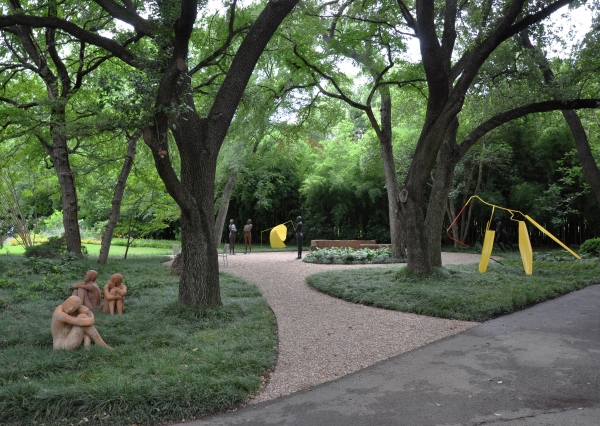 Valley
House Garden entrance designed by Tary Arterburn, Studio Outside.
circa 2016
Valley
House Garden entrance designed by Tary Arterburn, Studio Outside.
circa 2016
 Valley
House Garden entrance designed by Tary Arterburn, Studio Outside.
circa 2016
Valley
House Garden entrance designed by Tary Arterburn, Studio Outside.
circa 2016
In early
1953 art dealers Donald and Margaret Vogel (Peggy), lured by a wall of
trees and a white picnic table, stood on a dead-end gravel section of
Spring Valley Road in far north Dallas County, and made a decision that
would change their lives and, through the next 70 years, the lives of
many others. After walking through the heavily wooded property to
a creek, they returned to the site of the picnic table to be met by the
owner. Donald asked if the property was available for sale and the
owner replied, “for a price”. Without bargaining, they committed
to purchase the property on the spot and closed on April fool’s day,
paying more money per acre than anyone had ever paid in the area at that
time.
The Vogel’s already had the concept of building a home and studio on a
property they had just sold on Forest Park Road in Dallas, so they
decided to transplant their dream to their new acquisition. Once
they had cleared enough trees off their 4+ acres to start building, they
engaged modernist architect John Wesley Jones to draw up plans for
Donald’s house and studio design. Knowing that if Donald could not
make a living as an artist and art dealer, he could always do so in the
picture framing business, so the Vogels had Jones design a “frame
factory” to be built simultaneously with the house. An apartment
was designed into the back of the shop to house a framer if
necessary. When the house was finished, the Vogels named it
“Valley House” and opened the frame shop the next year.
When the Betty McLean Gallery, where both Donald and Peggy worked,
closed in late 1954, their two bedroom-two bath home not only acted as
their house and Donald’s studio, but it also became the “original”
Valley House Gallery. Shortly thereafter, while in the process of
installing a sand bottom pond in the back garden, they discovered that
the survey team, who had been hired to establish the property lines,
mistakenly shot the property using the wrong reference marker.
Because of this error, they lost a significant amount of land along
their western border, and they had to back fill part of the pond
excavation.
In 1957 a gallery space outside of the family residence was created by
an addition onto the south side of the frame shop that incorporated the
unused framer’s apartment. The new building was behind a small
pump building and water tank that supplied the property with
water. To hide the water supply and set the landscape design for
the house and the front part of the property, the Vogel’s enlisted the
assistance of landscape architects Marie and Arthur Berger. The
Bergers designed a redwood fence and brick pathway that surrounded the
waterworks to provide intimate spaces to display sculpture. They
also created a terrace and walkway around the residence.
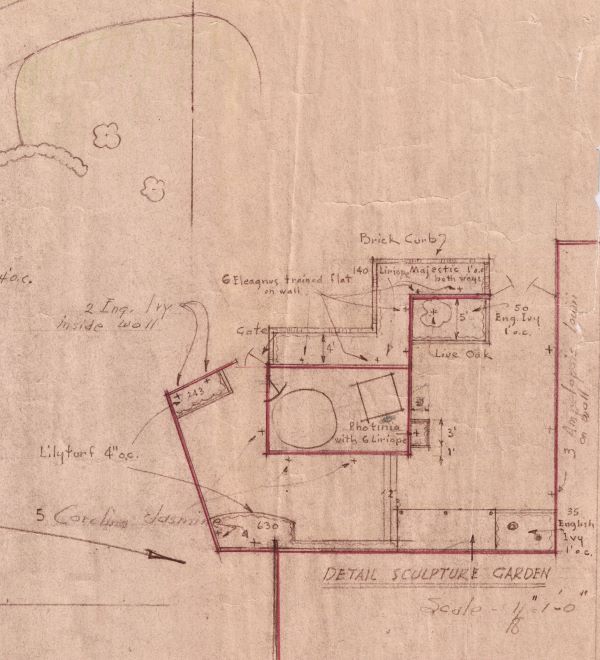 Marie and Arthur Berger
landscape design around the Valley House well house
Marie and Arthur Berger
landscape design around the Valley House well house
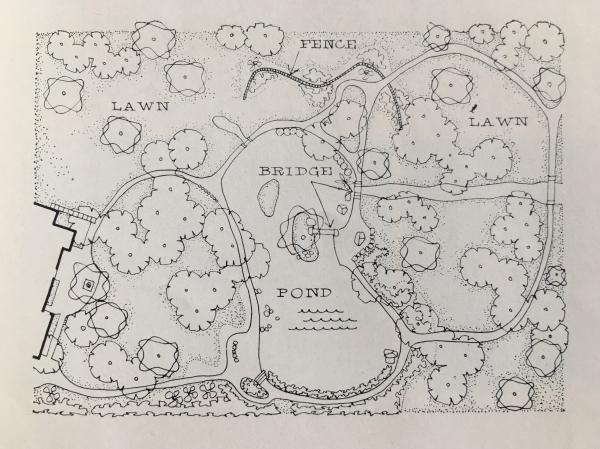 Clarence
Roy concept drawing for Valley House Garden
Clarence
Roy concept drawing for Valley House Garden
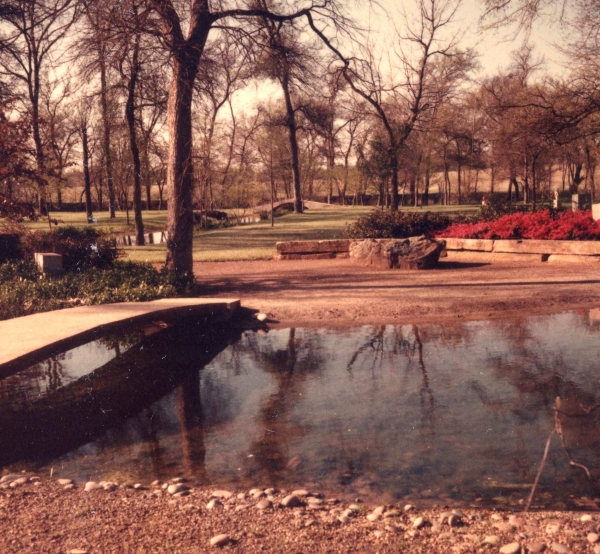 Clarence Roy Garden design
in 1962
Clarence Roy Garden design
in 1962
In early
October 1964, White Rock Creek, normally a meandering stream that
bordered their property to the south, flooded. The rising water
dramatically exceeded the Army Core of Engineer’s maximum flood
estimates, and 54 inches of muddy water inundated the family’s
residence. With the help of many volunteers and a flood sale, the
Vogels were able to quickly recover and return to the residence.
The year ended on a positive note when Valley House Gallery received an
invitation to be the first gallery in the Southern part of the United
States to join the prestigious Art Dealers Association of America.
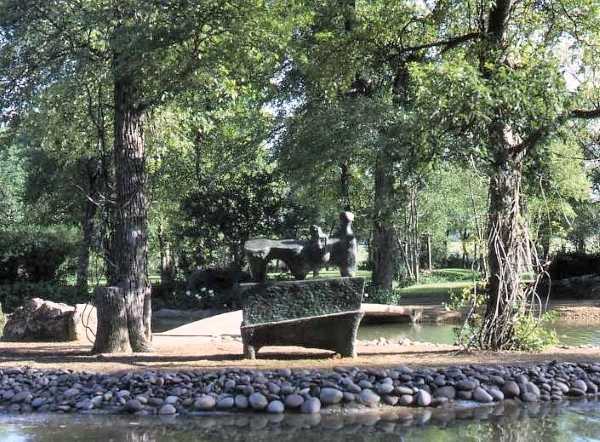 Henry Moore
show in 1965
Henry Moore
show in 1965
In April
of 1965, Valley House had its most important sculpture show when over 50
Henry Moore sculptures were exhibited throughout the gallery and
garden. From 1966 to 1968 the gallery did not present one-person
exhibitions, they instead focused on invitational group shows.
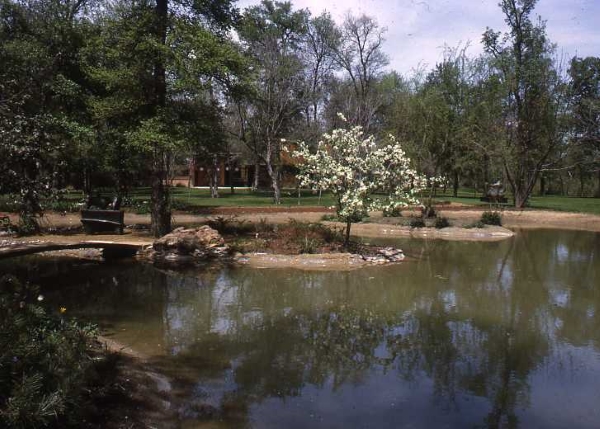 View of Lake looking North, Henry Moore show, 1965
View of Lake looking North, Henry Moore show, 1965
 Spider
Lilies looking East across North Side of Lake
Spider
Lilies looking East across North Side of Lake
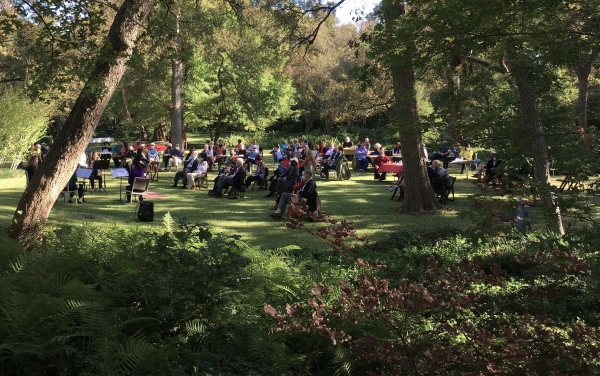 Orchestra of New Spain concert in the Valley House Garden during
covid, 2021
Orchestra of New Spain concert in the Valley House Garden during
covid, 2021